You don’t need a fancy gadget for measuring the sun. With a pencil, a pen, and a careful eye, you can watch the shade move across your garden like a slow creature and see just how much sun your plants receive. Today, learn the art of shade mapping and how to measure how much sun an area gets.
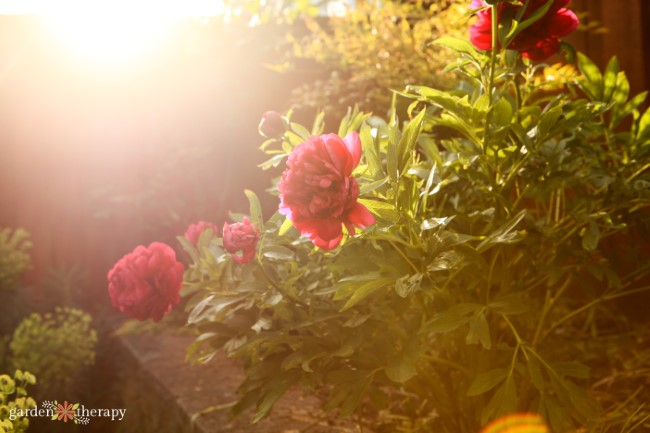
Here in Vancouver, we live for sunny days. With so much rain in the fall, spring, and winter, I, along with the rest of Vancouver and all the plants, lap up as much sun as we can.
But in the summer, we can have weeks of the hot sun. Those days, you might find more of us pale folks hiding under the trees rather than on the beach.
With the weather constantly in flux and the earth always tilting one way or another, figuring out how much sun you have in your garden really depends on the day. Today I want to break down one of the garden’s unsolved mysteries…how much sun do you have in your garden?
This post will cover…
- What is Considered Full Sun?
- Partial Shade
- Dappled Shade
- Full Shade
- Full Sun to Partial Shade
- How Much Sun Does My Yard Get?
- Measuring Sunlight With Sun and Shade Mapping
- 1. Sketch Your Garden
- 2. Watch the Sun
- 3. Plant Accordingly
- 4. Plan Ahead
- More Posts to Read

What is Considered Full Sun?
One question I often hear from beginner gardeners is what does full sunlight mean? I get it. Reading those little plant tags can be confusing. After all, you look at your garden in the summer, feel the rays on your skin, and can’t help but wonder how different parts of the garden and the plants feel the sun on their leaves.
To make things easy, full sun is generally considered an area that receives 6-8 hours of direct sunlight. That means sunlight streaming directly onto leaves. Typically, this needs to be during the sun’s peak hours of 10 AM to 4 PM.
Partial Shade
If you see a plant tag labelled as partial shade or partial sun, they mean the same thing. In this case, these plants prefer 4-6 hours of direct sun every day. Ideally, this would be in the morning and not during the sun’s hottest afternoon rays. These plants need some relief from the sun or they may burn or wilt.
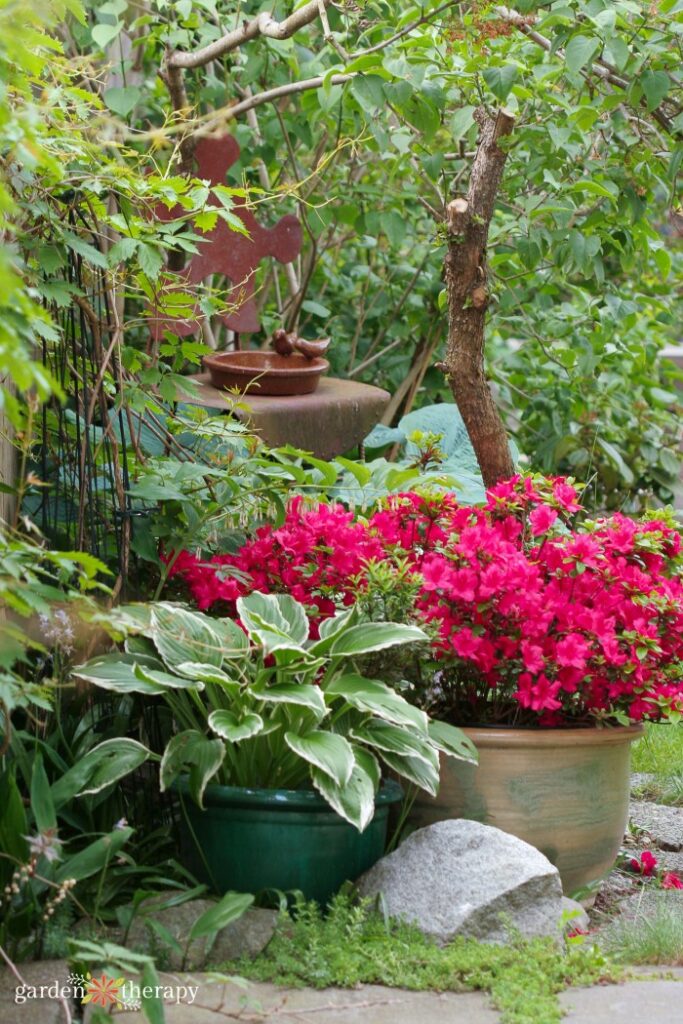
Dappled Shade
Sometimes, you may also encounter the term dappled shade or dappled sun. While rarer, it still applies sometimes. Similar to partial shade, these plants need sunlight but it should be filtered by deciduous trees above. Think about how you feel when you sit under a shady tree but still catch glimpses of sunlight peeking through.
In spring, these trees won’t have full leaves yet so anything beneath it will get more sunlight in the spring rather than in the summer. For this reason, spring bulbs often do well in these locations.

Full Shade
This one often confuses many. No plant can exist without any exposure to direct sunlight (besides mushrooms, but those are fungi). When a plant tag says full shade, it really means that the plant needs little sunlight.
Anything below 4 hours of morning or late afternoon sunlight would be considered full shade. Hostas are one of the few full shade-loving plants!

Full Sun to Partial Shade
Many plant tags will give you options for how much sunlight a plant requires. AKA plants are willing to take what they can get! I suggest doing your research before accepting this info as fact.
In most cases, full sun is the way to go. You’ll get more and faster growth and more and bigger blooms. But just keep an eye on the plant for signs of too much sun such as wilt, brown tips, yellowing leaves, and crispy leaves.
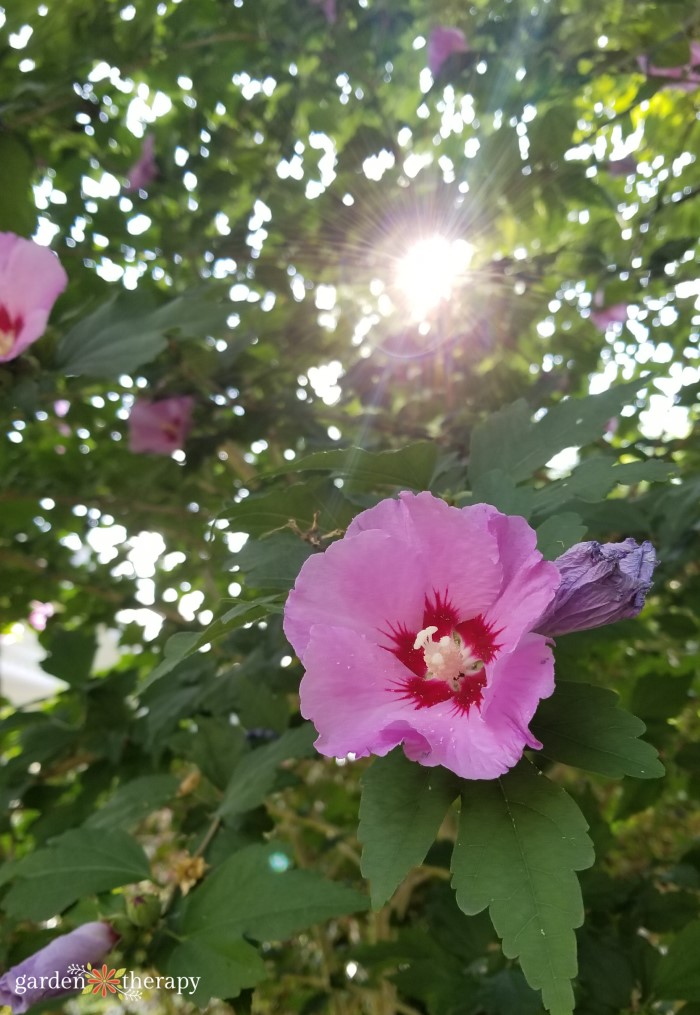
How Much Sun Does My Yard Get?
Are you wondering whether your garden is sunny, shady, part-sun, part-shade, or something else? The answer is that it’s probably all of those things! Different parts of the garden as well as the different times of the year change how much sun directly reaches the plants in a day.
In winter, the days are much shorter than in summer, so even in a fully sunny spot, the number of daylight hours is more indicative of a partly sunny spot. The sun will rise and set on a different path during each season. While it may be directly overhead at 12 PM in midsummer, it certainly won’t be in that same place in spring and fall.
You can find out how much sun an area gets by measuring it with sun mapping! It’s so easy to overestimate or underestimate how much sun we think we have in our gardens. So to truly figure it out, you have to get out there, study the sun, and write it down.
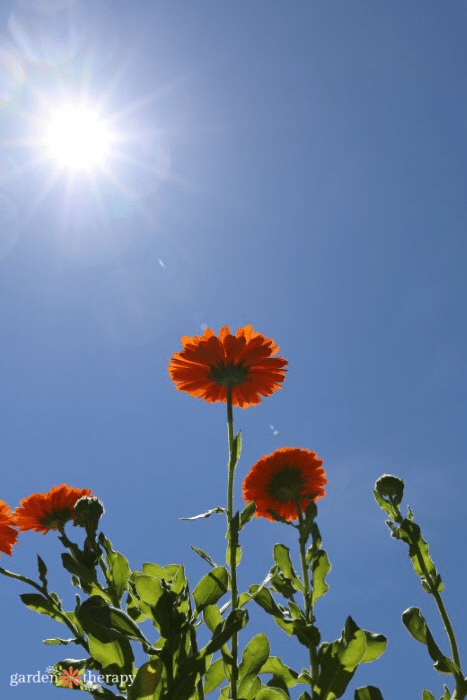
Measuring Sunlight With Sun and Shade Mapping
Sun mapping is the process of watching the sun’s path over a year, logging its path and how it changes throughout the seasons. It’s the best way to measure how much sun an area gets! Here’s how you can map out your own garden’s lighting conditions.
1. Sketch Your Garden
Draw a rough map of your garden: it doesn’t have to be perfect or drawn to scale. If you mark the boundaries and main structures such as houses, outbuildings, trees, and ponds, you will have a sense of the basic layout.
Next add the four cardinal directions (north, east, south, and west) somewhere on the map. You can then make copies of this map and use it to draw the sun each season or redraw the map in a journal.

2. Watch the Sun
Spend a few days watching where the sun rises and where it is at various times throughout the day (early morning, midmorning, noon, mid-afternoon, late afternoon, evening): then draw a circle on the map to show where the sun spreads.
You will have six overlapping circles at the end of the day. Colour the circles with yellow and orange pencils: yellow to indicate gentler sun and orange to indicate more intense sun.
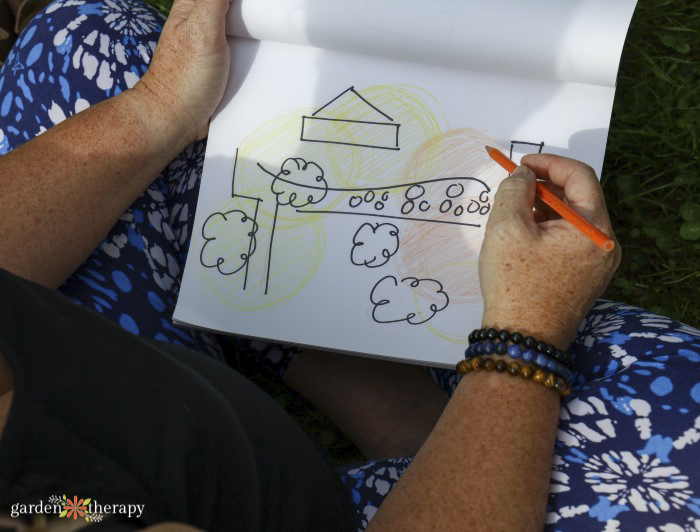
3. Plant Accordingly
Use these maps when planning your garden for sun or shade conditions. Parts of your garden that get sun all day long will enjoy the hardiest, sun-loving plants or it will need trees planted to provide shade.
Some areas might be more shaded by buildings and trees at different times of the year, but they get full sun at other times. This will help you match the plants in those areas to the sun and shade needs they have naturally.
4. Plan Ahead
It’s a good idea to repeat your sun mapping over the course of the year. Observe and record where and when the sun rises and sets for each quarter of the year to help you understand how much it changes based on the season.
I also suggest drawing the sun patterns for each month of the year in a sketchbook. To help you even further, add rainfall measurements by using a rain gauge.
When you know how much sun you get, you can then plan plants and structures that best work with the sun pattern in your garden. Perhaps you need more shade? Or maybe you need more full sun lovers in your garden!
I hope you give sun mapping a try. Let me know how much sun your garden gets and how you measured the sunlight in the comments down below.




